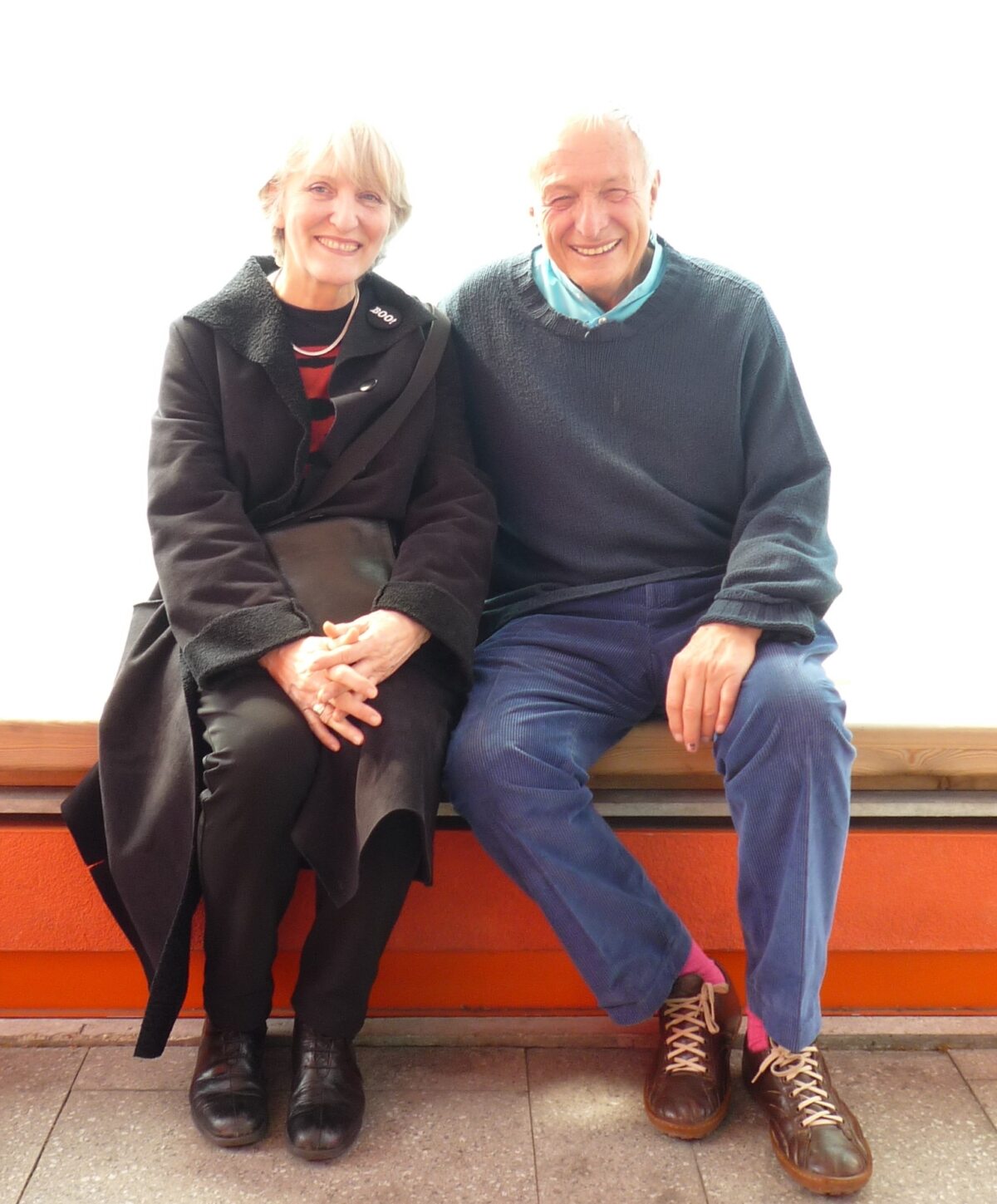A Tribute to Richard Rogers
‘Deeply saddened by the loss of Richard Rogers. In 2009 Richard gave me and fellow RIBA juror and artist Madelon Vriesendorp an unforgettable tour of Maggie’s Charing Cross; I took this photo on the day. For me it captures the brilliance and warmth of Richard and Madelon, two of the world’s greatest architectural imaginations.’ – Alison Brooks
Alison Brooks’ 2009 RIBA Awards Jury Citation for Maggie’s Charing Cross:
‘It is not normally in the power of architecture to move onlookers to tears, but this extraordinary building has inadvertently proven its ability to do just that. How is it possible that a building can generate an immediate and pervasive sense of welcome, warmth, serenity – and even love – in the context of a frantic Hammersmith thoroughfare – and in the shadow of a dauntingly huge NHS hospital? This is the poetry that Rogers Stirk Harbor have worked at the Maggies Centre in Fulham Palace Road. Their quietly confident building is truly, unquestionably a haven for those who have been diagnosed with cancer. Their achievement is in having created a completely informal, home-like sanctuary to help patients learn to live – or die – with cancer, beautifully.
Conceived as a two-storey pavilion, the architects have sheltered the centre from its harsh surroundings with a thick and cheerfully orange masonry wall that also serves as a backdrop for carefully planted tree groves and gardens. Its positive spirit is signalled with a roof canopy that hovers high above the centre’s walls to protectively oversail its many intimate internal gardens, courtyards and roof terraces.
This is the impression one has from a distance, while approaching the centre along the exquisite garden walk that has been design by Dan Pearson. With one large opening in the centre’s façade providing a glimpse of a courtyard garden and dining table, it immediately speaks of simple human pleasures. It invites us in.
Passing along the garden wall to the Centre’s entrance one first encounters a window seat, from where one can sit and contemplate the garden at the end of the passage, or the entrance door to the centre itself. This is a place allowing visitors to stop, rest, take a deep breath, and make a decision to either enter or to turn back. How many buildings provide their visitors such a simple luxury, to spend some time sitting in a beautiful spot before actually going in?
Once inside, a fireplace, a walled garden, and then the kitchen table beckons as the centrepiece of a double height space. This is the centre’s domestic heart, washed in light and framed by beautifully cast in-situ concrete columns. Also supporting the 1st floor and roof, the column arrangement is based on a 4m grid that provides an ideal proportion for the consultation, treatment rooms, living spaces and garden courtyards that all open off the kitchen. There are no doors in the centre – privacy can be created by sliding screens, translucent glass panels, or bookshelves. These are all built in a light timber that contributes a slightly Scandinavian air of well-being to the centre. Books, art, built-in furniture and inglenooks all contribute to an over-riding sense of comforting domesticity.
The first floor administration space is completely open to the floor below – in complete contrast to most health care institutions. This green-floored series of mezzanines feels like a tree house with views out on all four sides with a suntrap roof terrace protected by the oversailing roof. Balustrades at this level have been detailed as bookshelves and display surfaces, another example of the architect making every element of the building work in a multiplicity of modes, both beautiful and functional, with intense thoughtfulness and care.
The jury felt that RSH’s Maggie’s Centre exceeds at every level this most demanding of briefs; to create a sanctuary for terminally ill cancer sufferers for a client and personal friend of the architect (Charles Jencks); whose deep conviction in architecture’s power to shape our experience has dedicated the building to the memory of his wife. Richard Rogers and his team have produced a timeless work of architecture that not only distills the intentions of this brief but expresses in built form compassion, sensitivity and a deep sense of our common humanity.’
